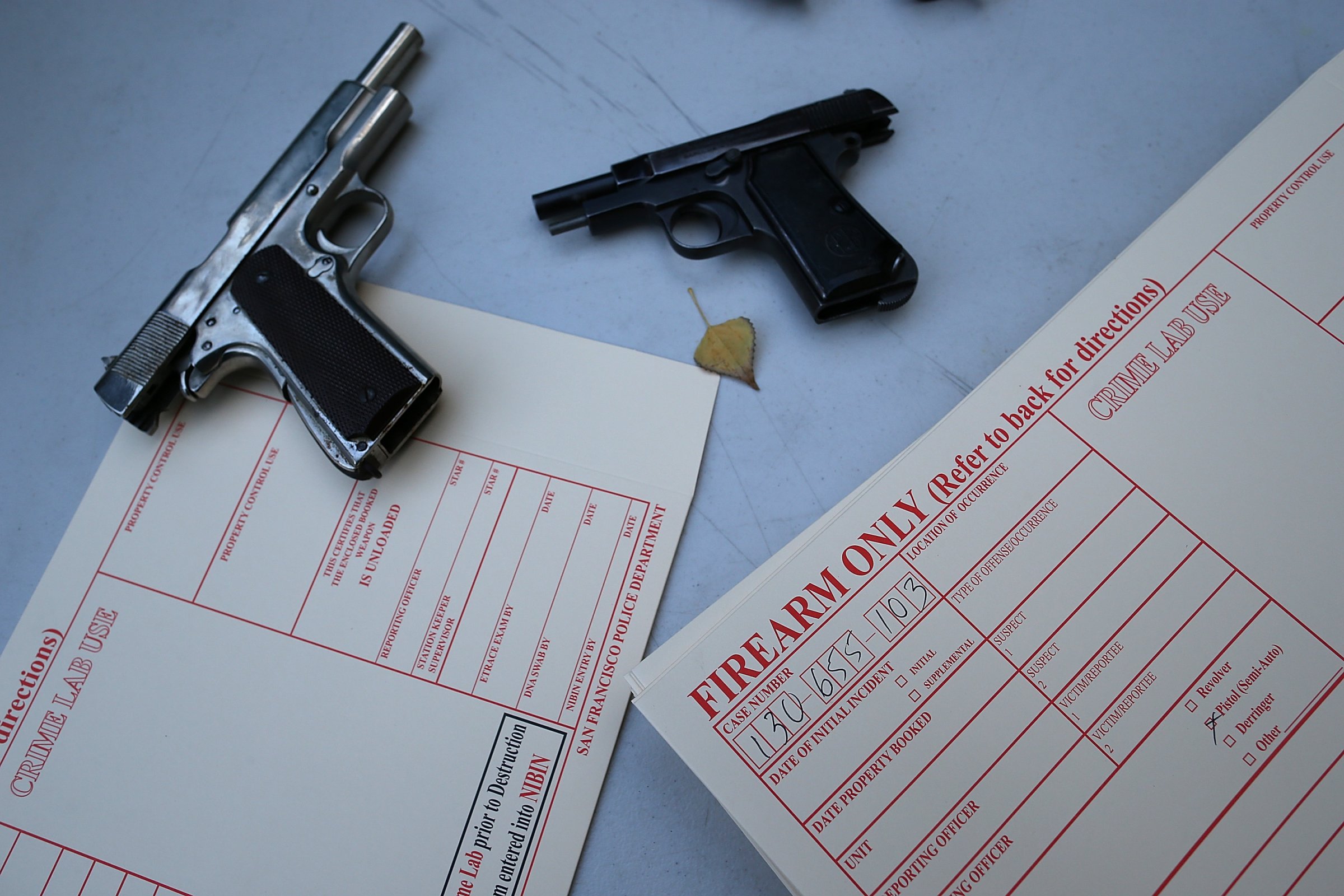
Sometimes a tragedy is so awful that it changes the national debate. The 1996 Dunblane school shooting in Scotland and the 2011 Norwegian gun massacre all prompted an outpouring of anguish and a demand for changes in law. In Australia, that moment was the 1996 Port Arthur massacre, in which a gunman killed 35 people at a tourist attraction in Tasmania.
As the U.S. reels over yet another mass shooting – this one involving a man who killed six students at UC Santa Barbara and shot himself – it’s worth taking a look at what happened in my country after that mass shooting – and at what has happened since.
As a nation that won its independence from Britain by consent rather than revolution, Australia’s Constitution does not contain a right to bear arms. But firearms are a part of rural life (used, for example, to cull kangaroos). Our police officers carry a firearm when they’re on patrol. Shooting ranges are common.
That’s the backdrop for the Port Arthur massacre, which took place a month after a conservative government had been elected. After the shooting, the new Prime Minister, John Howard, immediately came under pressure from elements of his party to leave gun laws unchanged.
But he didn’t. Supported by Tim Fisher, leader of the rural-based National Party (with which Howard’s party was in coalition), Howard tightened laws around access to firearms, particularly rifles and shotguns. The government also announced a buyback, with owners being compensated for their weapons at market prices. More than 650,000 guns were handed in.
From 2008 to 2010, while working as an economics professor at the Australian National University, I teamed up with Wilfrid Laurier University’s Christine Neill to study how the Australian gun buyback affected the firearms homicide and suicide rate. Whichever way you cut the data, it seemed clear that the national gun buyback reduced gun deaths. In the decade prior to the buyback, there was an average of one mass shooting (five or more victims) every year. In the decade after the buyback, there were no mass shootings. Overall, the firearms homicide and firearms suicide rates had been trending steadily downwards through the 1980s and early 1990s, but the fall accelerated after the buyback. Analyzing variations in the amount of guns turned in for buyback between states, we again found the same result: in states where more firearms were bought back, there was a bigger drop in gun deaths.
Although the policy was aimed at reducing gun homicides, we found that its effect was mostly to reduce the gun suicide rate, with most of the 200 lives saved being averted suicides. This makes sense once you realize that the ratio of firearms suicides to homicides is around 4 to 1 in Australia.
In the decade and a half since the Australian gun buyback, the number of firearms per person has stayed constant, and gun deaths have remained thankfully low.
When I studied the effect of the policy, I was a professor. Since then, I have entered federal politics, representing the Australian Labor Party. So one lesson is to recognize courage when you see it in your political opponents. Howard and Fisher could have squibbed the chance to change Australia’s gun laws, but they didn’t. Both believed that gun laws needed to change, and set about building a political movement for reform. They probably paid a political price at the 1998 election.
Another lesson is the value of a bold package of reforms in changing culture. When U.S. researchers have studied the impact of U.S. gun buybacks on crime, they typically find no effect. Most likely, it’s because these buybacks are conducted at the city level, and are not accompanied by a general tightening in ownership laws.
In my parliamentary district, most see firm gun laws as supporting the ability of law-abiding shooters to enjoy their sports. This was the philosophy adopted by America’s National Rifle Association in the 1960s, when it backed a crackdown on cheap handguns (“Saturday night specials”) because, as they said at the time, they had “no sporting purpose.”
Yet since 1977, when Harlan Carter and Wayne LaPierre took over the organization, the NRA has taken progressively more hardline positions: opposing bans on armor-piercing bullets, describing federal agents as “jack-booted thugs.” Australia’s gun lobbies have never been as well resourced, connected or politically extreme.
Much as we’d like to believe the “Dirty Harry” fantasy that guns are used to defend goodies from baddies, the world doesn’t work like that. Gun deaths are more likely to occur when a depressed teen finds dad’s gun, when an angry spouse turns a rifle on their cheating partner, or when a young boy opens the bedside drawer and starts playing with the a loaded pistol inside. That’s why the most careful U.S. studies point to the same conclusion: more guns, more crime.
Andrew Leigh is the assistant treasury spokesperson for the Labor Opposition in Australia and was an economics professor at the Australian National University in Canberra. He serves in the House of Representatives, for the seat of Fraser. His website is www.andrewleigh.com. This piece originally appeared at Zocalo Public Square.
More Must-Reads from TIME
- Cybersecurity Experts Are Sounding the Alarm on DOGE
- Meet the 2025 Women of the Year
- The Harsh Truth About Disability Inclusion
- Why Do More Young Adults Have Cancer?
- Colman Domingo Leads With Radical Love
- How to Get Better at Doing Things Alone
- Michelle Zauner Stares Down the Darkness
Contact us at letters@time.com